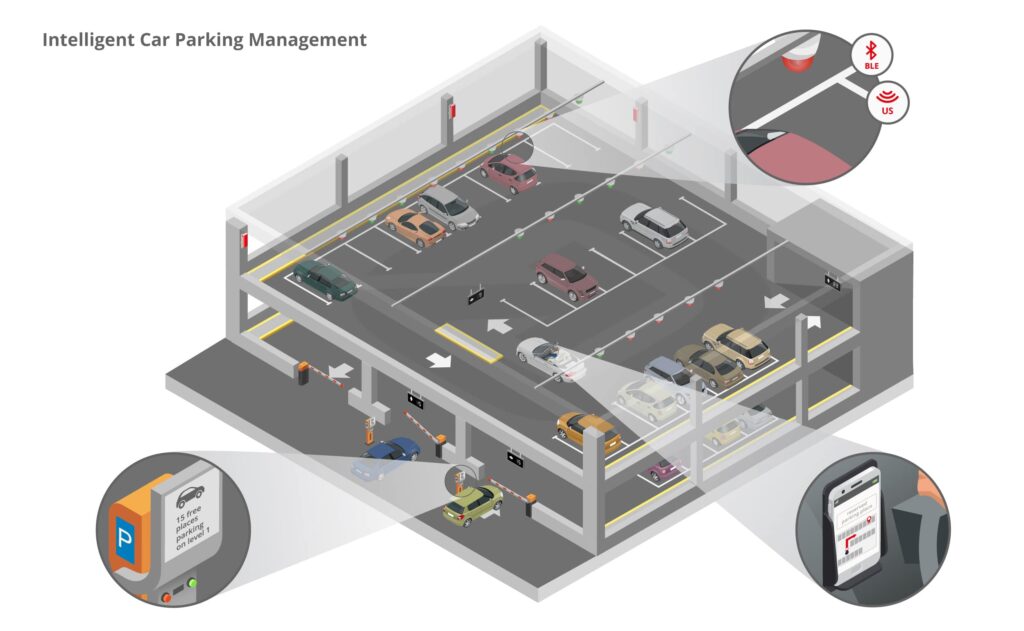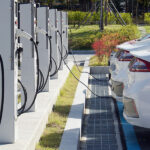A sensor-controlled parking management system optimizes the use of off-street parking facilities and reduces parking search traffic in cities.
AT A GLANCE
- real-time detection of parking space occupancy via ultrasonic sensors
- guidance system within parking facilities to free slots
- 2D/3D building maps
- reservation option with navigation to designated slot
- mobile payment option
PROBLEM DEFINITION
Parking problems are ubiquitous in almost every major city. The limited availability of parking spaces can contribute to road congestion, high pollutant emissions, and driver frustration. With several car parks available, motorists often do not know where to go to find a free space. On top of that, when entering a heavily frequented, multi-storey car park, it can take a long time to find a free parking slot.
SOLUTION
Smart parking systems – applying advanced technologies to improve speed and efficiency of locating, reserving, and paying for parking – can reduce vehicle traffic, fuel consumption, and air pollution. A smart parking solution provides up-to-the-minute information about parking availability at underground and surface parking facilities. This information is displayed on automatically updated variable message signs situated on approaches to the city, enabling motorists to decide in advance where they should leave their car.
Drivers can be guided to parking facilities that have vacant spaces with the help of a mobile app that displays the number of available spaces at any given time. When approaching the entrance barrier, a display shows which level to go to for the closest free parking slots. Further displays in the parking facility give directions how to get there.
The system also allows for remote parking space reservation via app. In this case, motorists can be guided to the allocated space using indoor navigation. In addition, the app can provide other services, such as intelligent vehicle search (car finder function) and electronic payment, replacing paper-based ticketing.
TECHNICAL IMPLEMENTATION
infsoft Locator Nodes are placed at strategic points of the parking facility. Bluetooth Low Energy (BLE) beacons with integrated ultrasonic sensors are installed above each parking space and at the parking gates. Via distance measurement, the sensor detects the presence/absence of vehicles with the objective of building an availability map that can be used for parking guidance and reservation services. The data is transferred via Bluetooth to the Locator Nodes and then forwarded to the infsoft LocAware platform®, where the occupancy information is processed. The platform relays the real-time information to the variable message signs to alert drivers to the availability of parking spaces.
Car owners install a mobile application on their phones, which gives them access to the data. The app receives Bluetooth signals from the beacons and uses them to calculate the smartphone’s position and enable turn-by-turn navigation to a reserved parking slot or to the location of the parked vehicle when returning to the car park (provided that the user has saved the car’s position). Optionally, an interface to a third-party system can enable GPS-based outdoor navigation from any starting point.
As a car approaches the entrance barrier of the parking facility, the app senses the beacon at the barrier and registers the user entering the car park. The exit is recorded in the same way. Based on entry and exit time, parking duration and fee is calculated. The latter can be paid via the payment method deposited by the user.








